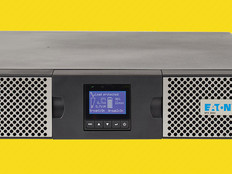From the Printed Page
At government agencies around the country, the ability to digitize paper records and post documents on websites has led the charge toward enterprise scanners.
Scanning today has taken on broader IT use in most agencies. It’s no longer focused primarily on preserving records.
“It used to be that you would scan documents and then just archive them for storage purposes,” says Anne Valaitis, an associate director at market research firm InfoTrends. “Now, you have the ability to take forms, capture data and have that data automatically routed.”
For agencies such as the Army, the Federal Maritime Commission and the National Archives and Records Administration, the ability to scan and digitize key paper documents increases the accuracy of and access to information, and reduces data management and printing costs.
“And because many of these devices are smaller and affordable, they are available to more people,” Valaitis says. “It is absolutely evolving.”
These tools can do more than capture an image of a page. Using additional or integrated OCR software, they can convert data automatically so that users can access information from the scanned document and make it available to anyone, anywhere, from the networked device.
At Their Fingertips
At the Federal Maritime Commission, the regulatory agency charged with monitoring ocean carriers, marine terminals and ports, digitizing documents is a daily operation that provides easy access to key information on shipping violations.
Karen Gregory, secretary of the Federal Maritime Commission, says scanning and posting files for active cases is extremely helpful to the agency’s commissioners, who must review decisions made by administrative law judges.
“We have logs for active cases on our website, and all documents are scanned,” Gregory says. “The key documents are posted on the website. They become a legal research tool. That’s a huge benefit.”
The commission uses scanners that have an optical resolution of 100 to 400 dots per inch, a duty cycle of 10,000 pages per day, and a maximum document size of 11.7 inches by 40 inches.
Instead of poring through piles of documents, commissioners can have case files, opening briefs and numerous administrative law filings at their fingertips, she says.
Price per Image
The National Archives and Records Administration uses enterprise scanners as a tool to index documents, institute project management and for quality control.
Steve Puglia, preservation and imaging specialist at the National Archives, estimates that enterprise scanning costs nearly 10 times less than paper document archiving.
“You can drive the price per image way down,” Puglia says. “Having a digital image, the information is equally important. The digital file is a value-added aspect. People are putting more precedent on the digital versions.”
If the optical character recognition on a document has a 90 percent accuracy rate, the document can be scanned automatically, creating instant cost savings. “You have less need for people to create indexing information,” Puglia says. When scanned documents have lower OCR accuracy, he says, it makes sense to scan manually.
Tidier Data
The ability of enterprise scanners to increase business efficiencies has not gone unnoticed, InfoTrend’s Valaitis says.
With enterprise scanning, agencies “are ensuring the ability to search and retrieve documents,” she says. “There is less room for error. You are not relying on somebody to index it.”
The Army Publishing Directorate, which manages the distribution of department publications and forms to more than 2 million active military, Army Reserve, National Guard and civilian personnel, has streamlined operations by delivering more than 1,500 different electronic administrative publications and more than 2,300 forms to Army personnel through a secure intranet of the official Army websites.
Converting publications and forms to an electronic format has reduced printing costs, increased access to personnel, improved accuracy of information and shortened the time to complete and process forms, says Stephen Wehrly, chief of policy and standards at the Army Publishing Directorate.
Processing basic forms manually costs the Army up to $50 in administrative time per form for staff to complete the forms and route them to the appropriate people, who then must rekey information into back-end systems.
See how NASA uses scanners to share scientific information with the aerospace community; go to fedtechmagazine.com/
310scanners.
By using Adobe solutions to automate the delivery of publications and forms, the Army can now integrate data into its systems and reuse it across different applications. Ultimately, automating the document delivery saves money and gives the Army more control over materials delivered to personnel.
Digitizing Officer Evaluation Reports helps streamline officer promotions and prevents delays in completing the forms. The paper-based workflow required a tremendous amount of manual
processing involving individuals typing information on forms and routing materials for review and approval.
“Now you can do it electronically, and it simplifies the manpower and speeds up the whole process,” Wehrly says. “Building our processes around Adobe XML gives us a strong foundation for future electronic workflows. We are easily able to integrate data into our systems and reuse it across applications.”
Relying less on manpower is just one example in which enterprise scanners are delivering efficiencies. Government agencies are also saving in mailing and shipping costs because electronic documents are much easier to search and retrieve, Valaitis says.
“Scanning solutions are helping bridge the gap between the paper and electronic process,” she says. “You are taking it from a static environment to an electronic environment, and it speeds up efficiencies.”.







